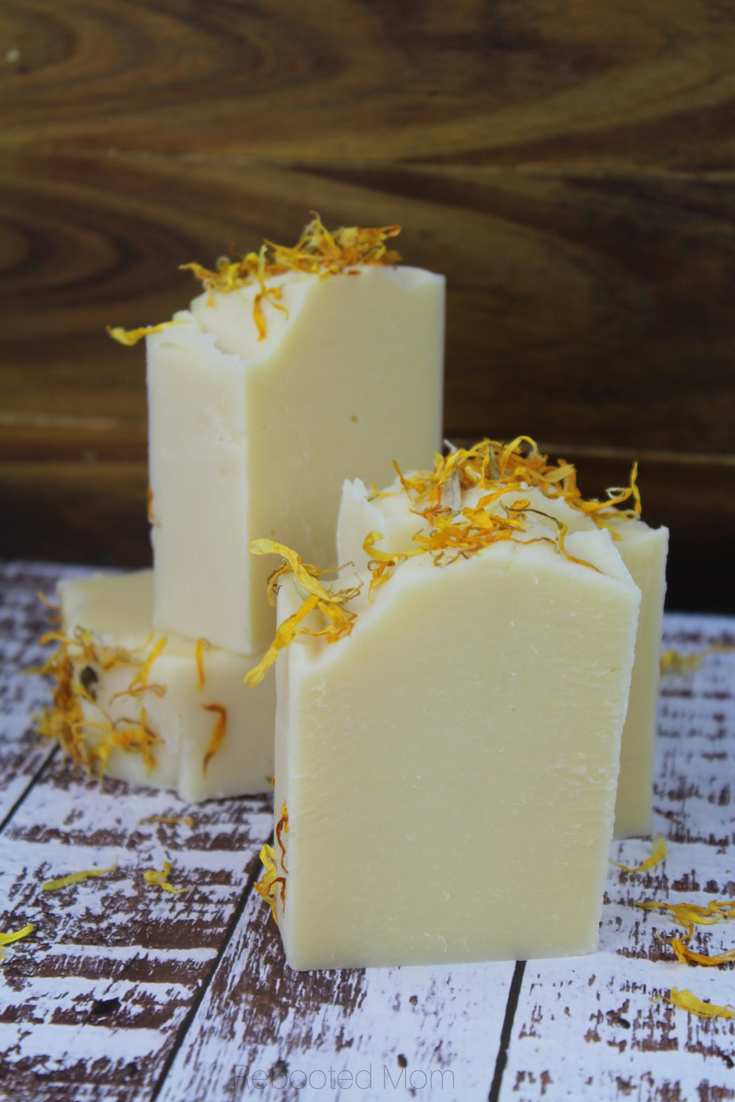
Over the last few weeks, I have been soap-making machine – not just to prepare for Christmas a few weeks away, but to be able to provide friends and family with a handmade gift option for Valentines Day and Mother’s Day, up ahead.
Since soap takes a good 4-6 weeks to cure, the soap I’m busy making now should be ready to go by mid-February and available for friends and family to purchase. It’s exciting to be able to make something that they can gift – something unique, and very personal.
This soap is simple yet gorgeous – it’s made with raw milk and scented with Fir Needle Essential Oil. The base of the soap is palm-free and combines castor oil, coconut oil, olive oil, shea butter and avocado oil.
Coconut oil and castor oil give it great lather, while the avocado oil provides moisturization – the soap smells incredible! It smells like freshly cut trees in a winter forest. Fir needle is one of my favorite essential oils to use in soap because it handles beautifully.
If raw milk isn’t an option in your area, feel free to substitute your own choice of milk – whether coconut, almond, or goat’s milk. Using raw milk is possible in any cold process soap recipe – it just requires that you weigh the milk and freeze in ice cube trays prior to starting your project. Milk has a considerable amount of sugar, and those sugars have a tendency to burn when combined with the lye.
By freezing beforehand, you prevent the milk from scorching the sugars, keeping the color a beautiful ivory.
This recipe is one of my favorite basic starting points for making soap – it produces a beautiful bar that lathers well and is soft on your skin.
Oils and Fats:
- 2 oz castor oil
- 13 oz extra virgin olive oil
- 8.0 oz coconut oil
- 3.5 oz shea butter, refined
- 4 oz avocado oil
Lye and Liquid:
- 4.21 oz lye
- 10.11 oz raw milk
Essential Oils:
- Fir Needle Essential Oil
#1: Suit up for safety. Put on goggles, wear gloves and don clothes that have long sleeves. Go a step further and make sure all distractions are out of the room/house – kids, pets, etc. Use a well-ventilated area (I like to use my kitchen sink because I have a few windows behind it that provide ventilation). I would not recommend doing anything outside because you run the risk of tripping with the lye/bucket/dishes by going back and forth.
#2: Weigh out the milk you will be using in a plastic cup or pitcher and pour into ice cube trays the day or night before making soap. Milk needs to be frozen in order to prevent scorching.
#3: Prepare all of your ingredients – and have everything set aside to start:
- Thermometer (one that you don’t use for food)
- Silicone Column Mold, 31 oz – I LOVE this mold!
- Pyrex 8 cup measuring device – not required, but so handy to have!
- Immersion Blender – you don’t have to spend oodles but you will want something reliable with a metal stick, not plastic.
- Lye – this is the brand we use
- Digital Scale to measure your ingredients
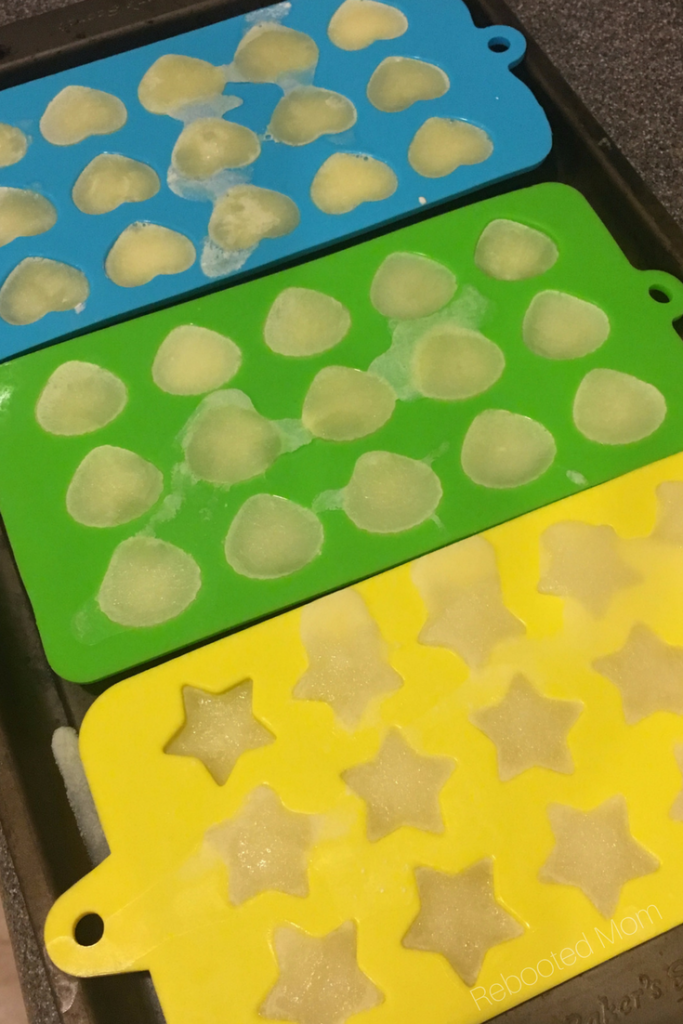
#4: Pull out the milk you plan on using in your recipe. If you have it frozen into ice cubes, place the cubes in a heavy plastic measuring cup or bowl, and set that bowl in another dish filled with ice. This will keep the milk as cold as possible while the lye works to break it down.
#5: Sprinkle the lye into your milk ice cubes, a little at a time. At first, there will be little to no reaction, but after 10-15 seconds, you will see the ice cubes start to melt. Stir slowly as you continue to add little bits of lye. Stir, but don’t rush the melting. You want to make sure everything is dissolved properly and that the lye is fully mixed in.
Once you have sprinkled all of your lye on the milk and stirred to combine, set the mixture aside towards the back of the counter.
#6: Combine your oils that you have weighed out. You will want to make sure your oils are between 90-100 degrees F – so you may have to use a digital thermometer (one that you do not use for food). If the oils are not 90-100 degrees, you can combine them in a pot on the stove and heat slowly.
When using milk in your soap, I find that it’s best to have the temperature of the oils within 10-15 degrees of the lye/milk… so if you heated your oils on the stove, allow them time to cool down considerably until they are in that range.
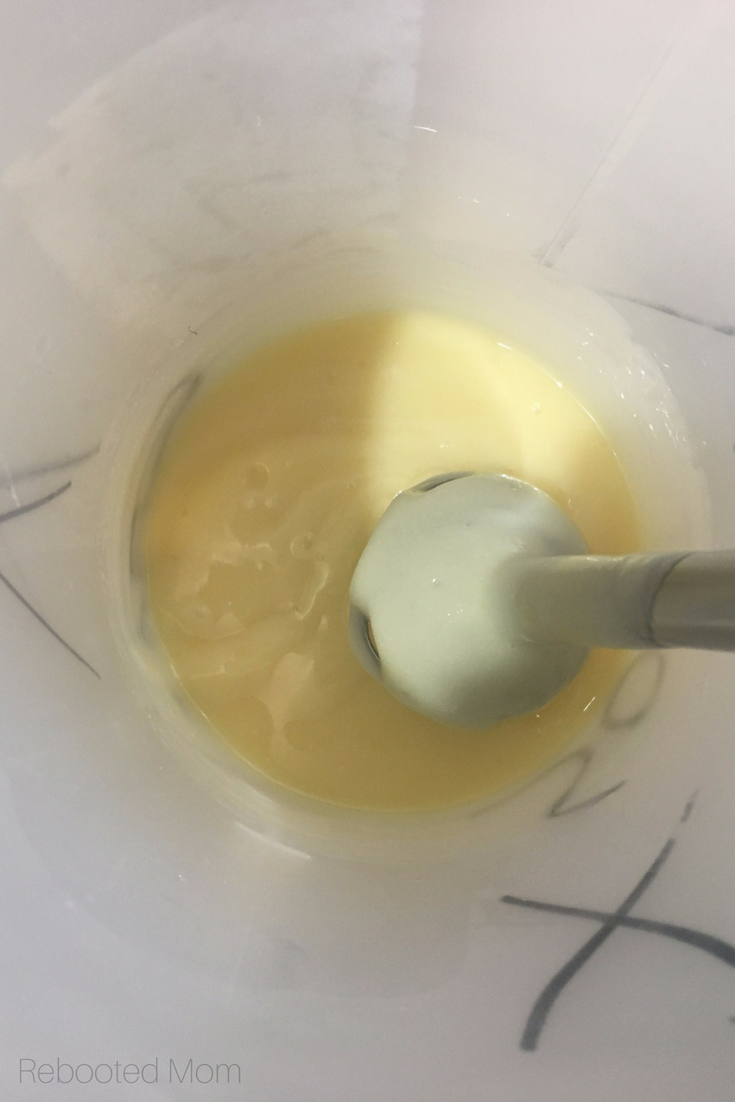
#7: Slowly pour the lye mixture into the oils. Use your immersion blender to stir the oil and lye together, making sure to pulse the immersion and take 15-20 second breaks – running it continually will cause it to overheat.
#8: Add the essential oil at this time. Bramble Berry has a really handy fragrance calculator that I used to do add just a medium amount of Fir Needle. It’s always best to use your scale to weigh the oil instead of using drops.
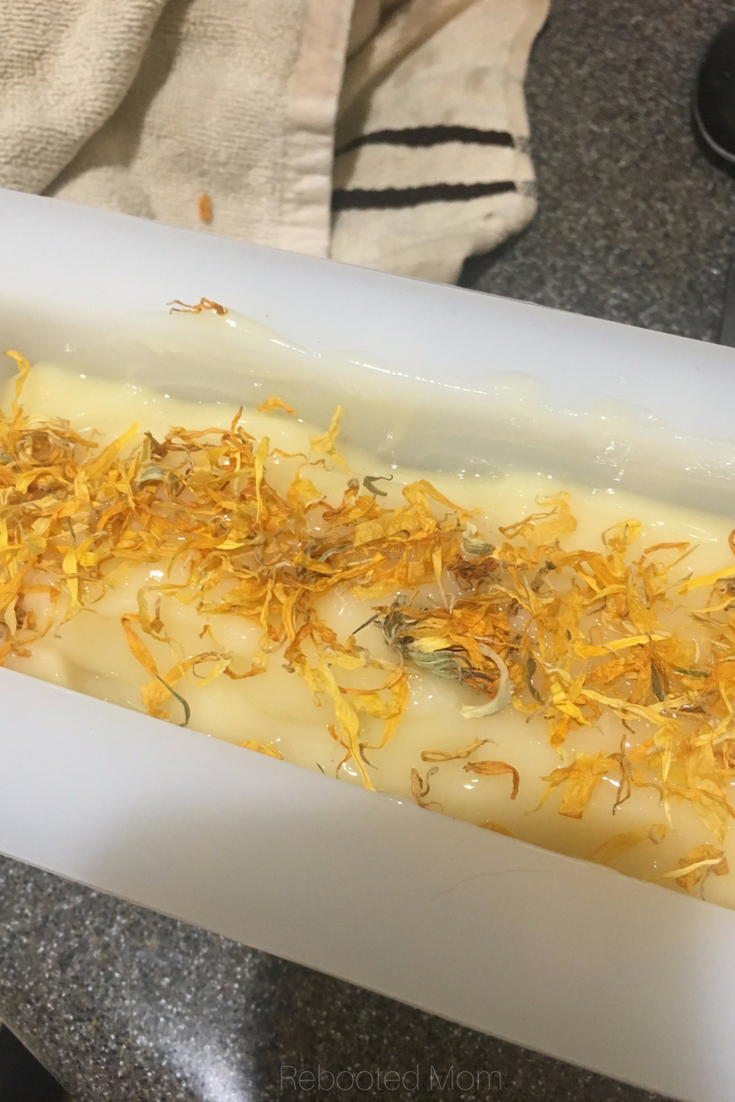
#9: Quickly pour the batter into the mold evenly distributing from one side to another. Use a paddle or long spoon to spoon out as much of the batter as you can – swirl the top (if desired). Sprinkle your calendula flowers on the top of the soap, making sure to push down gently so they stick to the soap.
If the soap is too soft to swirl the top, then place in the freezer for a few minutes until it a hardens up a bit. Allow the soap to remain in the freezer for 24 hours to avoid gel phase. After that 24 hours, leave it in the mold an additional 24 hours before unmolding.
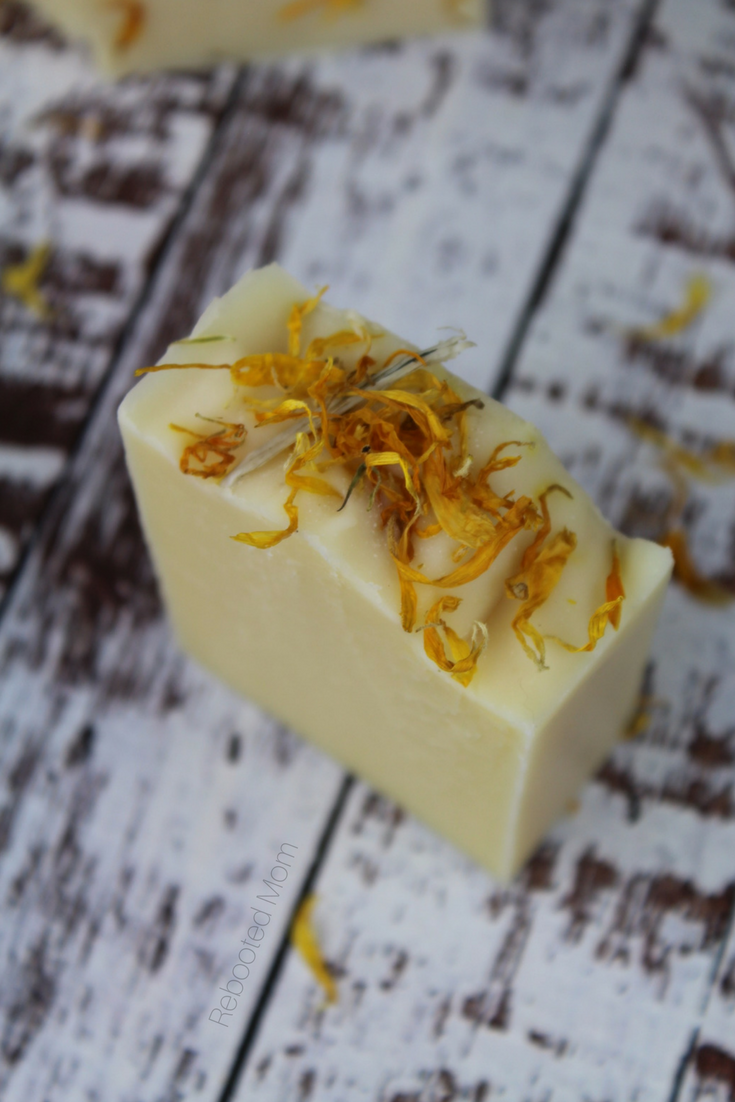
After that additional 24 hours, gently unmold and slice – you may want to turn the soap on its side to cut, allowing you to avoid drag marks from the calendula flowers. Allow the soap 6 weeks to cure.
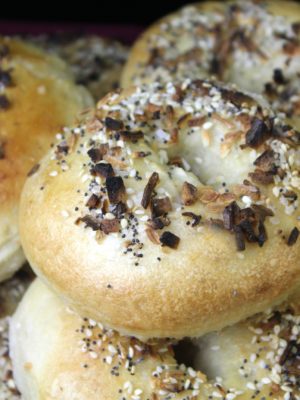
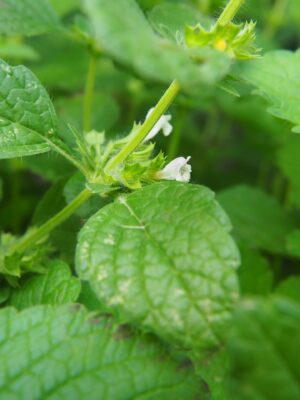
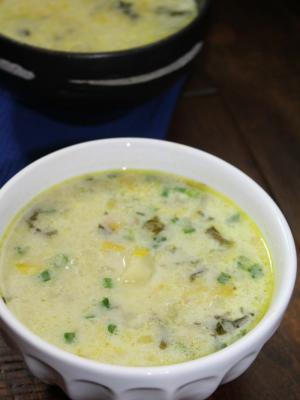
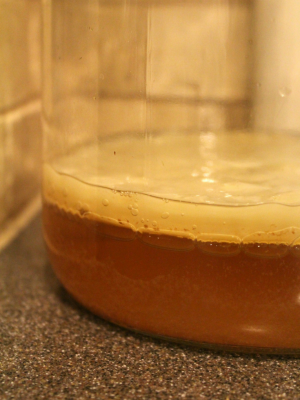
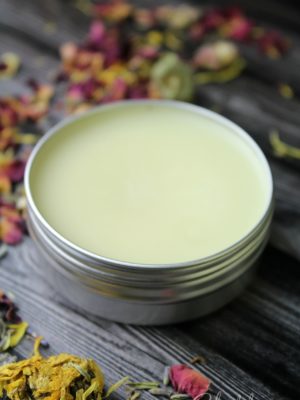
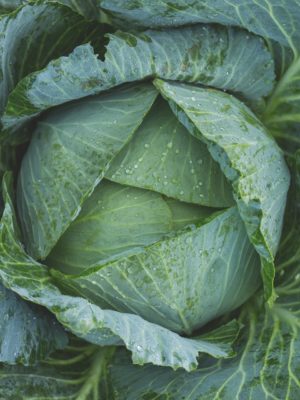

This looks like a nice recipe! Is it possible to switch the milk for a vegetarian milk like almond or coconut milk?
Yes, you absolutely can!
When measuring the ingredients, is the listed recipe for ounces on a scale or liquid ounces in a measuring cup?
Rachel, ounces on a scale. I hope that helps.